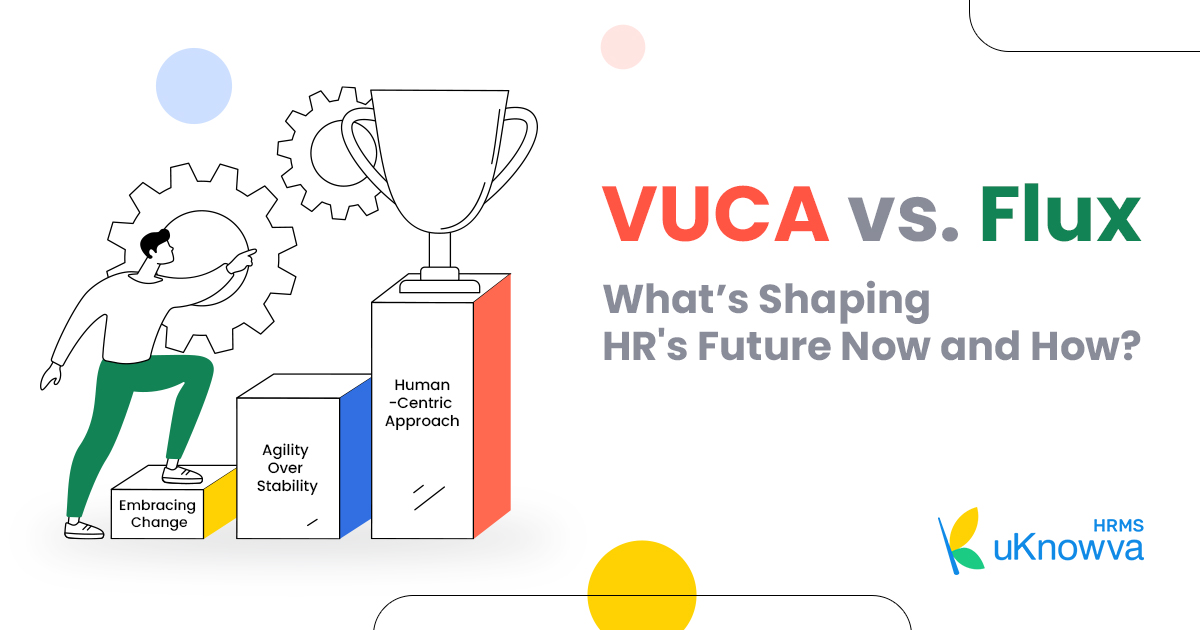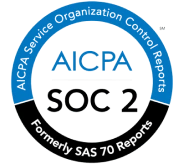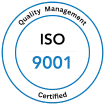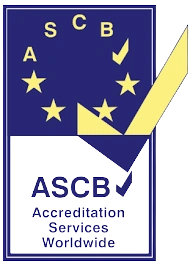Table of Content
Introduction
HR leaders today face an unprecedented level of change. The modern workplace is evolving at a rapid pace, driven by technological advancements, shifting workforce expectations, and global disruptions.
To make sense of this complexity, organisations have relied on the VUCA (Volatility, Uncertainty, Complexity, and Ambiguity) framework.
However, a new perspective is emerging—Flux, which focuses on continuous change and adaptability.
So, what does this shift mean for HR? Should HR professionals still prepare for a VUCA world, or is Flux the future?
This article will explore the differences between VUCA and Flux, how each concept impacts HR strategies, and how HR leaders can prepare for an ever-changing world of work.

Understanding VUCA and Flux
What is VUCA?
VUCA was originally coined by the U.S. Army in the late 20th century to describe the unpredictable nature of warfare. It was later adopted by businesses to describe uncertain and fast-changing environments.
The four elements of VUCA are:
- Volatility – The speed and unpredictability of change (e.g., market fluctuations, sudden industry shifts).
- Uncertainty – The inability to predict future trends or outcomes accurately.
- Complexity – The increasing number of interconnected variables makes decision-making more difficult.
- Ambiguity – Situations with multiple possible interpretations, where clear solutions may not exist.
HR professionals operating in a VUCA world focus on risk management, structured planning, and resilience-building strategies.
What is Flux?
Flux takes a different approach. Rather than viewing uncertainty as a problem to be managed, Flux sees it as an opportunity to grow, adapt, and innovate.
Key characteristics of Flux include:
- Embracing Change – Organisations must be comfortable with continuous transformation.
- Agility Over Stability – Traditional long-term planning is replaced by flexible, real-time adjustments.
- Human-Centric Approach – Employees need support to develop resilience and adaptability.
Flux challenges the rigid structures that VUCA often relies on, advocating for a more fluid, evolving approach to work.
How VUCA and Flux Impact HR
HR teams must decide whether to focus on mitigating uncertainty (VUCA) or fully embrace change (Flux). Let’s explore how these approaches impact different areas of HR.
- Workforce Planning in an Uncertain Future
VUCA-driven HR strategies focus on forecasting talent needs and preparing for multiple future scenarios.
However, workforce planning in a Flux world is about creating adaptability rather than predicting the future.
- VUCA Approach: Developing rigid workforce plans based on market predictions.
- Flux Approach: Focusing on continuous reskilling and workforce flexibility.
- Talent Acquisition and Retention
Hiring in a VUCA world means filling skill gaps and managing labor market fluctuations. However, in a Flux-driven environment, HR shifts towards hiring for agility, problem-solving, and potential rather than specific job skills.
- VUCA Challenge: Rapidly changing job roles and skill shortages.
- Flux Solution: Hiring adaptable employees with strong learning capabilities.
- Employee Experience and Well-being
Change is stressful. A VUCA strategy ensures employees have stability, clear expectations, and mental health support. On the other hand, Flux promotes a culture where employees embrace change rather than fear it.
- VUCA Focus: Predictability and structured support systems.
- Flux Focus: Psychological safety, resilience training, and open communication.
- Learning and Development (L&D)
HR must equip employees with the skills needed to navigate constant change.
- VUCA HR Response: Structured training programs for current skill gaps.
- Flux HR Response: Encouraging self-directed learning, adaptability, and continuous skill development.
- Leadership Development
Leaders in a VUCA world focus on risk management and structured decision-making, while Flux leaders embrace uncertainty, adaptability, and people-centric leadership.
- VUCA Perspective: Strong hierarchical structures and risk management.
- Flux Perspective: Agile leadership, coaching, and fostering innovation.
- Digital Transformation and HR Tech
Technology is crucial in VUCA and Flux environments, but the focus differs.
- VUCA’s Tech Role: Using predictive analytics and AI for stability and efficiency.
- Flux’s Tech Role: Leveraging automation and real-time analytics for agility and rapid decision-making.
- HR Policies and Compliance
The rise of remote work, global hiring, and changing labor laws make traditional HR policies outdated. A VUCA approach ensures compliance, while Flux builds flexible policies that evolve with changing circumstances.
- VUCA Mindset: Risk assessment and legal protection.
- Flux Mindset: Flexible, adaptable policies centered on people.
Future-Proofing HR: Strategies for Success
- Embracing Agility in HR Practices
Implement agile HR methodologies to allow quick adjustments.
Move away from rigid structures and focus on employee empowerment.
- Building a Resilient Workforce
Shift from hiring for job-specific skills to hiring for adaptability.
Encourage cross-functional collaboration and knowledge sharing.
- Leveraging HR Technology
Use AI and analytics to gain insights into workforce trends.
Automate repetitive HR tasks using HRMS platforms like uKnowva HRMS.
- Fostering a Culture of Continuous Learning
Introduce personalised learning paths for employees.
Promote a growth mindset within teams and leadership.
- Encouraging Human-Centered Leadership
Develop leaders who focus on mentorship, coaching, and inspiration.
Train managers to support employees through change and uncertainty.
Conclusion
HR’s future isn’t just about managing uncertainty with a VUCA approach—it’s about thriving in a Flux-driven world.
Businesses that embrace adaptability, agility, and lifelong learning will lead the future of work.
By blending structured planning (VUCA) with an agile mindset (Flux), HR leaders can create resilient, future-ready organisations. Instead of fearing change, they can harness it to drive innovation and growth.
FAQs on VUCA vs. Flux: What’s Shaping HR's Future Now and How?
- What is VUCA, and how does it impact HR?
VUCA stands for Volatility, Uncertainty, Complexity, and Ambiguity. It describes a business environment where change happens rapidly and unpredictably.
HR leaders must develop agile strategies to manage workforce disruptions, upskill employees, and enhance organisational resilience.
- What is the concept of Flux, and how is it different from VUCA?
Flux refers to a continuous state of change and transformation, emphasising adaptability rather than just reacting to instability. While VUCA focuses on managing uncertainty, Flux encourages HR to embed flexibility into policies, culture, and technology to stay ahead of change.
- How does the shift from VUCA to Flux affect HR strategies?
HR must move from reactive problem-solving (VUCA) to proactive adaptability (Flux). This means:
- Encouraging continuous learning and skill development.
- Leveraging HR tech like AI and automation to manage dynamic workforce needs.
- Building a culture of resilience and agility.












